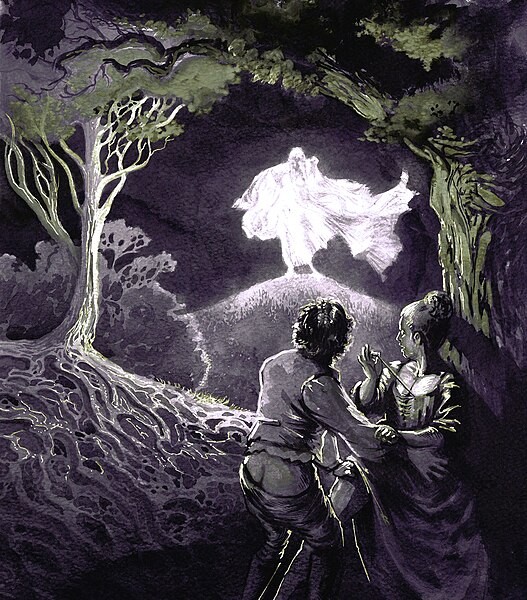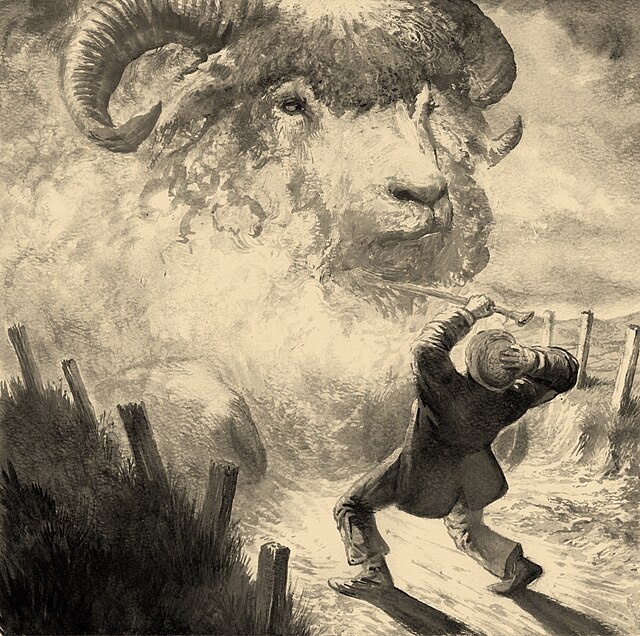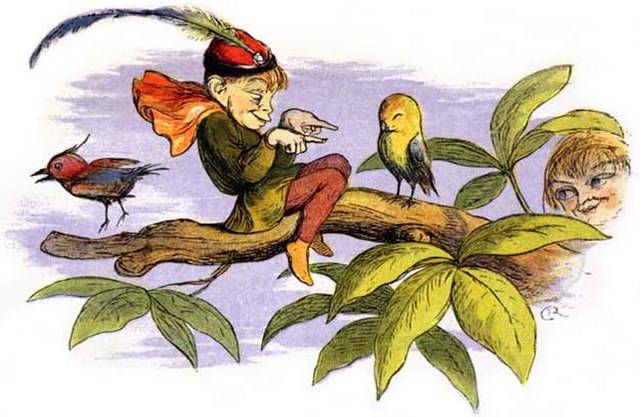A boggart is a supernatural being from English folklore. The dialectologist Elizabeth Wright described the boggart as 'a generic name for an apparition'; folklorist Simon Young defines it as 'any ambivalent or evil solitary supernatural spirit'. Halifax folklorist Kai Roberts states that boggart ‘might have been used to refer to anything from a hilltop hobgoblin to a household faerie, from a headless apparition to a proto-typical poltergeist’. As these wide definitions suggest boggarts are to be found both within and out of doors, as a household spirit or a malevolent genius loci inhabiting fields or other topographical features.The 1867 book Lancashire Folklore by Harland and Wilkinson, makes a distinction between "House boggarts" and other types. Typical descriptions show boggarts to be malevolent. It is said that the boggart crawls into people's beds at night and puts a clammy hand on their faces. Sometimes he strips the bedsheets off them. The household boggart may follow a family wherever they flee. One Lancashire source reports the belief that a boggart should never be named: if the boggart was given a name, it could neither be reasoned with nor persuaded, but would become uncontrollable and destructive.

Boggart
The Boggart of Fair Becca, as described in "Juvenile tales for boys and girls", William Milner, 1849, shrieking at a courting couple. Art by Jantiff Illustration
Sheep Boggart encountered near Carnforth - "The supposed sheep aroused itself and as if with indignity at the insult, swelled out as the man affirms, into the size of a house". Art by Jantiff Illustration
The Copp Boggart, in one of its forms - "A terrific dog with a white neck and a tail similar to a sheaf of corn curled up all over its shoulders". Art by Rhi Wynter
English folklore consists of the myths and legends of England, including the English region's mythical creatures, traditional recipes, urban legends, proverbs, superstitions, and folktales. Its cultural history is rooted in Celtic, Christian, Nordic and Germanic folklore.
A sculpture of the mythical Green Man on the Church of St Mary and St David, Kilpeck
Poor little birdie teased, by the 19th-century English illustrator Richard Doyle. It depicts an elf as imagined in English folktales.
King Guthrum being appointed as a Christian by King Alfred before becoming the ruler of East Anglia
An image of 'The Questing Beast', a monster slain by King Arthur and his knights in Malory's Morte Darthur








